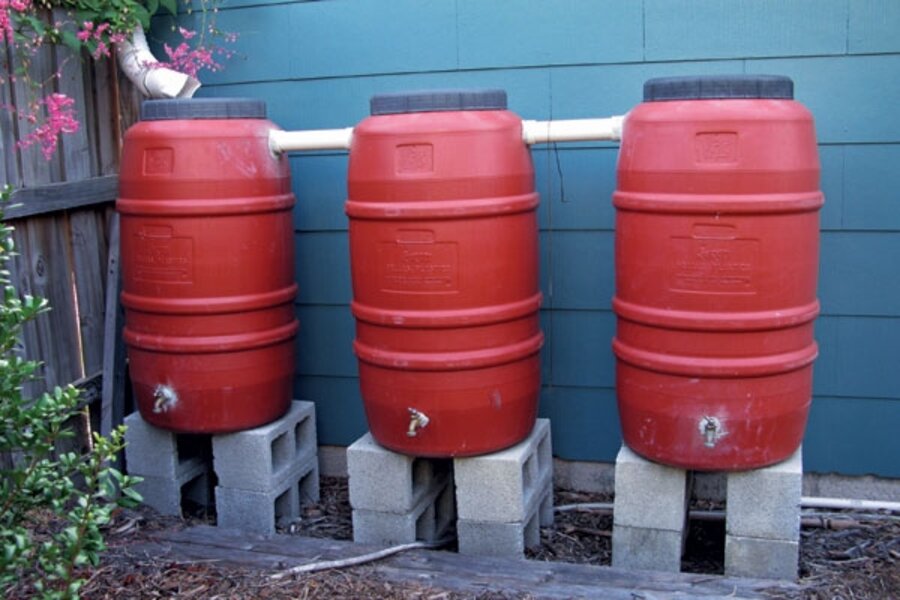Earth Talk – free water from your roof
Loading...
Q: How can I make good use of the rainwater that runs down my roof and into my gutters?
– Brian Smith, Nashua, N.H.
A: For most of us, the rain that falls on our roof runs off into the ground or the sewer system. But if you’re motivated to save a little water and redistribute it on your lawns or plants – or even use it for laundry, dishes, or other interior needs – collecting rainwater from your gutters’ downspouts is a no-brainer.
Two areas don’t allow it, though. Utah and parts of Washington State have antiquated but nonetheless tough laws banning anyone but owners of water rights from collecting rainwater flowing off privately owned rooftops. Such laws are rarely enforced, however, and one in Colorado was recently overturned.
According to John C. Davis, writing in E – The Environmental Magazine, just about any home-owner can collect rainwater, given that the roof and gutters do most of the work. And since an inch of rain falling on a 2,000-square-foot roof produces some 1,200 gallons of runoff, one can harvest enough to irrigate the lawn or garden in all but the most drought-stricken areas.
Plants and grass actually do better when fed rainwater instead of tap water, which is usually treated with softeners that can inhibit plant growth.
And, reports Mr. Davis, the lack of minerals in rainwater makes it more effective than tap water for shampooing or doing dishes. Using rainwater for plumbing uses can also extend the life of pipes and water heaters, since the salts added to tap water facilitate corrosion. However, homeowners should set up a water purification system if they do plan to use rainwater for interior needs.
Rainwater harvesting can also be good for the local community, as it reduces the erosion, flooding, and pollution runoff associated with heavy rainfall, and lessens reliance on public water supplies. Given these benefits, some states subsidize residential rainwater collection systems.
Many varieties of rain barrel systems, starting at just $100, are available for home installation. A typical setup is simply a rain barrel positioned under a gutter’s downspout.
“The barrel is typically fitted with a spigot at its base to fill a watering can or attach a soaker hose (which bleeds out water all along its length, providing effortless drip irrigation), and a filter or screen at its top to prevent a buildup of leaves and other debris,” writes Davis. According to the US Environmental Protection Agency, a single 100-gallon rain barrel can save up to 1,300 gallons of utility-provided water during the high-demand summer months.
Handy homeowners can make their own water harvesting systems, but buying one premade is a lot easier. Most nurseries and garden centers offer a range of choices (as well as advice), but websites make it easy to order a system online, too.
Questions about living green? Send to: EarthTalk, c/o E - The Environmental Magazine, Box 5098, Westport, CT 06881; earthtalk@emagazine.com.
Editor’s note: For more articles about the environment, see the Monitor’s main environment page, which offers information on many environment topics. Also, check out our Bright Green blog archive and our RSS feed.





